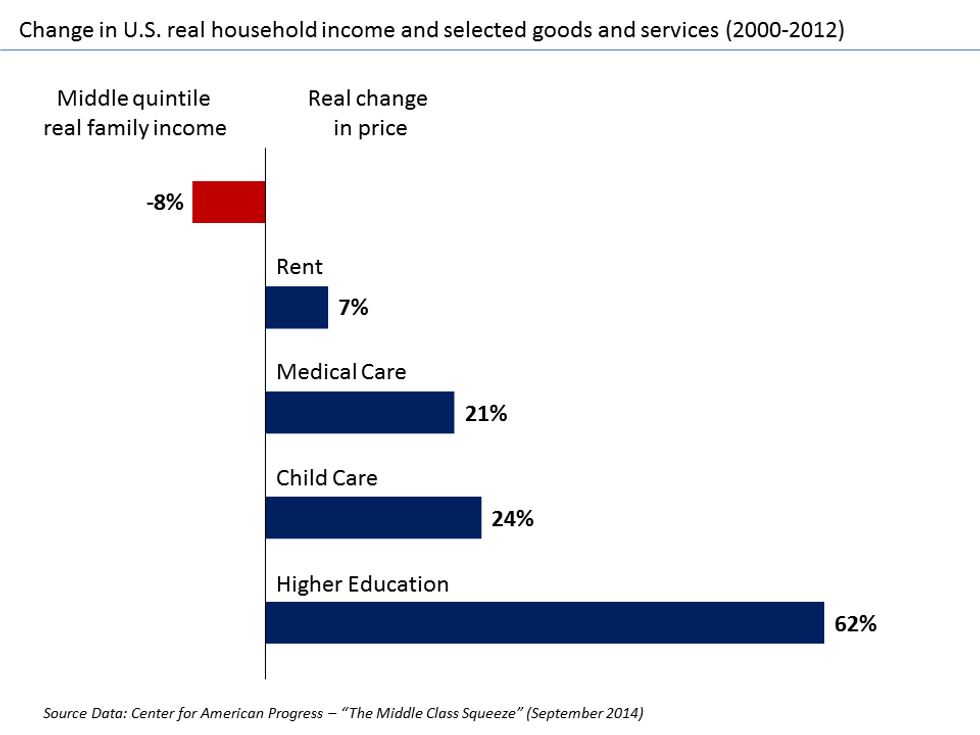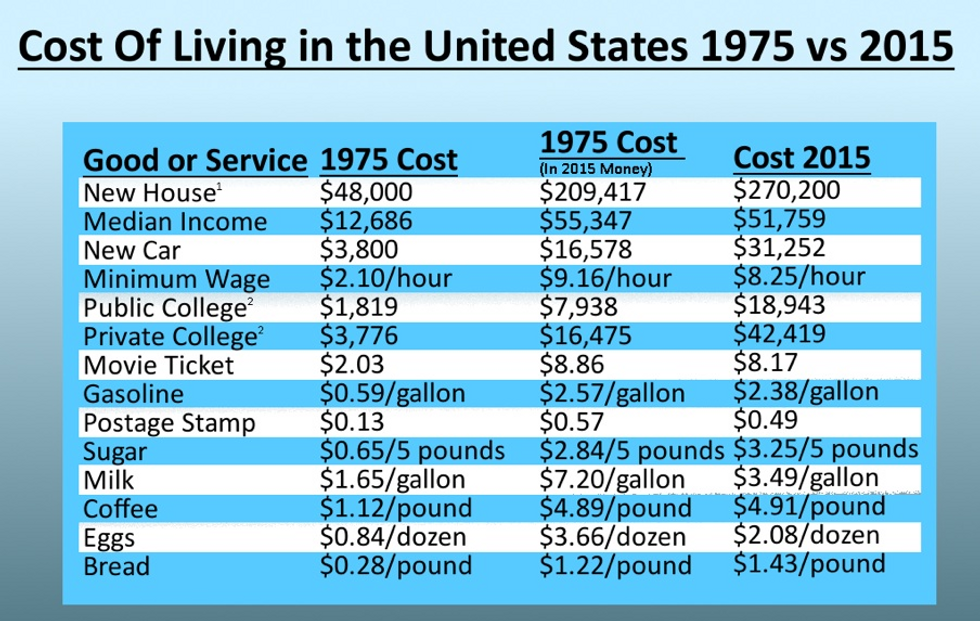Just about any university student is familiar with the joke that all liberal arts and humanities students make: “I am never going to get a job”. In the millennial generation, nihilistic humor takes on a new layer of reality as it hits closer and closer to home. As unemployment rates following graduation continue to increase, and as more arts funding is cut under the Trump administration, the cold truth of the apparently useless nature of a $40,00 Bachelor of Arts degree becomes more apparent to every student.
The crisis of Generation Y, referring to those born between 1980 and 2000, is that the generation was raised with the same ideals as Generation X and the Baby Boomers. That is to say, while each generation suffered their own serious problems, the changes in the economy since have made the goals of millennials near impossible. In the chart shown below, accessed through the Center for American Progress, just the change in what’s considered average costs over 12 years is insane, particularly in terms of the higher education’s tuition hike. A large factor in these changes is, of course, the 2008 Recession, but this price increase seriously affects every millennial seeking higher education. In this 12 year period of change, about ⅔ of all millennials would be approaching 18 years of age, and beginning to attend or apply to university.
Additionally, in the below chart provided by David Stockman through “My Budget 360”, we can see the changes of costs in 2015 dollar equivalents, as inflation has of course changed the value of one USD. Although many mass produced foods such as eggs and milk have decreased in cost, due to the recent, controversial uses of overcrowding slaughterhouses and the like for cost efficiency, the most important costs have always been raised, while minimum wage has dropped significantly (note that the minimum wage provided in this chart refers to Illinois, Maryland, and Nevada, with many states having significantly lower minimum wages and significantly higher minimum wages). The cost of a new car has almost doubled, public college more than doubled, and private college nearly tripled.
Simply put, millennials are in a situation of crisis where it is becoming increasingly difficult for lower middle class and working class people to have social mobility in American capitalism. However, because millennials have been raised with the ideals of college no longer being an optional extension of education but rather a necessity, as college degrees became more commonplace in the ‘80s, the crisis has been amplified so that millennials essentially MUST attend college for a career not based in hard labor or minimum wage, and instead are put into extreme debt. Beyond this, most of the jobs on the market for recent college graduates require Master’s degrees or higher, continuing to add onto the increasing student debt. And finally, most job openings are in STEM-based fields.
So why on Earth do college students study humanities and liberal arts? What’s the point of it?
Because in our current world, it’s important to be able to understand the role that culture plays in a late capitalist society. Because despite the horrors the world has already seen, the Rohingya genocide in Myanmar continues, the decisive elimination of gay men in the Ukraine continues, the Syrian civil war continues, and terrorists continue to attack all nations alike. But these are problems that can’t be solved with a Java code or a physics experiment.
As much as the world is beginning to become codified, and as important as STEM work is, humans and life itself is incredibly complex. As long as the Earth is inhabited by humans, liberal arts students are necessary, and we can only hope that soon the job market will begin to recognize the need for students studying in all areas.


















